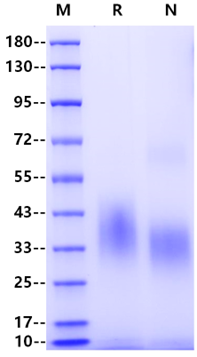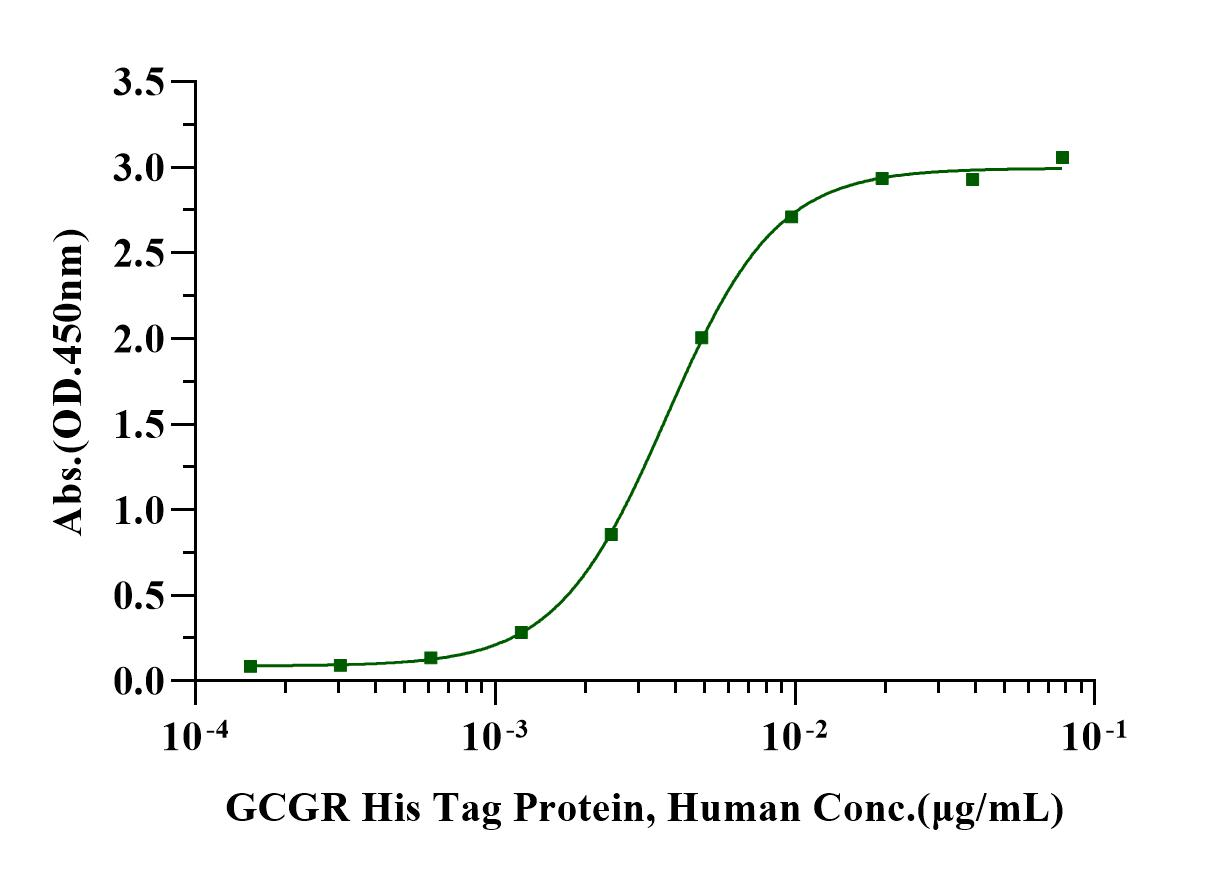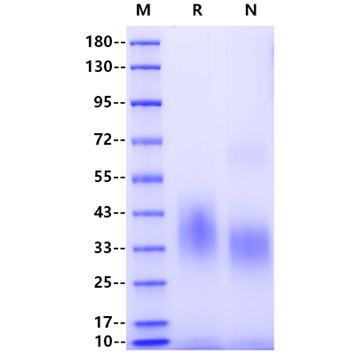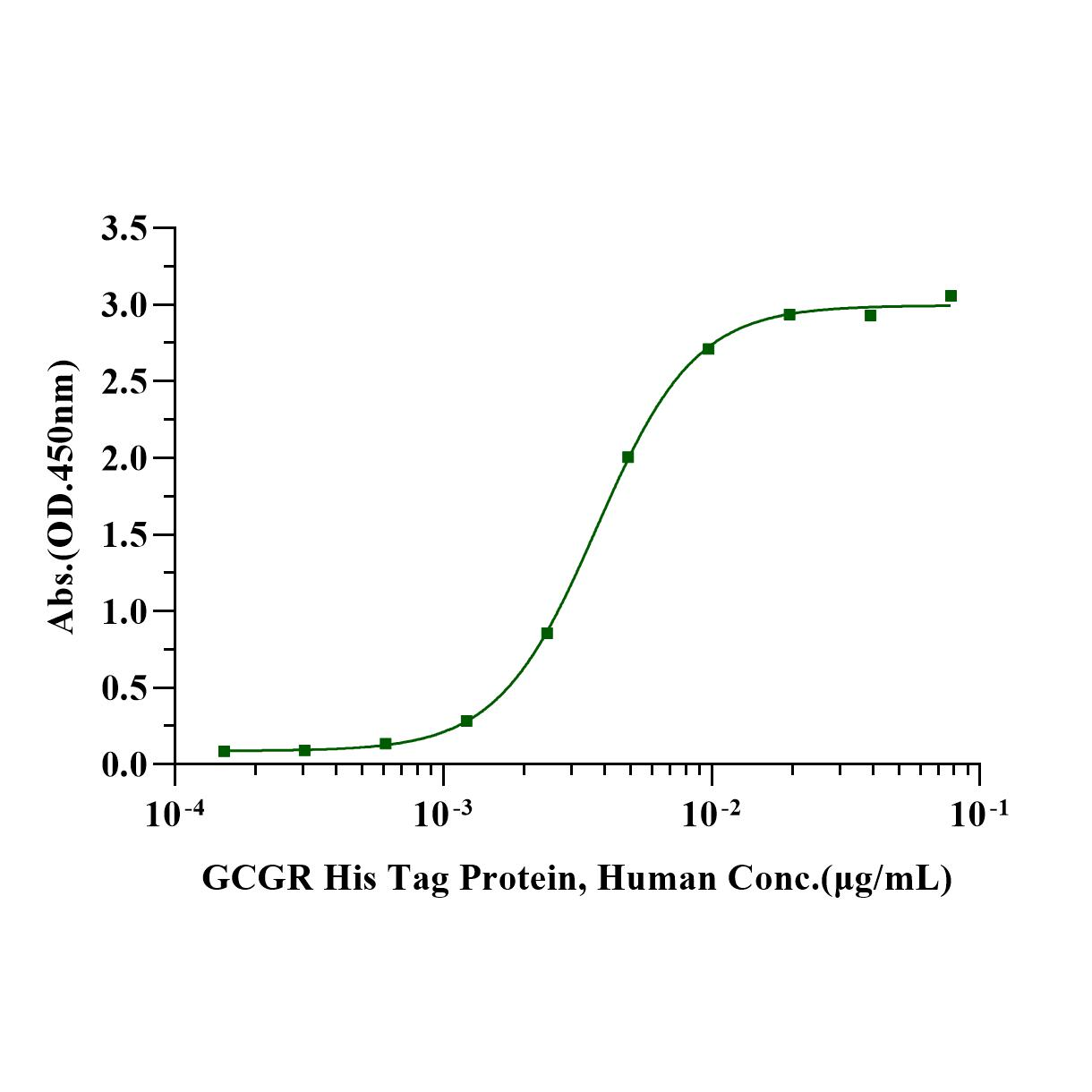Product Details
Product Details
Product Specification
| Species | Human |
| Accession | P47871-1 |
| Amino Acid Sequence | Ala26-Lys136, with C-terminal 8*His AQVMDFLFEKWKLYGDQCHHNLSLLPPPTELVCNRTFDKYSCWPDTPANTTANISCPWYLPWHHKVQHRFVFKRCGPDGQWVRGPRGQPWRDASQCQMDGEEIEVQKEVAK GGGSHHHHHHHH |
| Expression System | HEK293 |
| Molecular Weight | 33-43 kDa(Reducing) |
| Purity | >95% by SDS-PAGE |
| Endotoxin | <0.1EU/μg |
| Conjugation | Unconjugated |
| Tag | His Tag |
| Physical Appearance | Lyophilized Powder |
| Storage Buffer | PBS, pH7.4 |
| Reconstitution | Reconstitute at 0.1-1 mg/ml according to the size in ultrapure water after rapid centrifugation. |
| Stability & Storage | · 12 months from date of receipt, lyophilized powder stored at -20 to -80℃. · 3 months, -20 to -80℃ under sterile conditions after reconstitution. · 1 week, 2 to 8℃ under sterile conditions after reconstitution. · Please avoid repeated freeze-thaw cycles. |
Background
The glucagon receptor (GCGR) is a Class B GPCR that has an important role in maintenance of glucose homeostasis and, as such, is considered to be a valuable target for the treatment of diabetes. The GCGR is widely expressed and can be found in the liver, adipose tissue, heart, kidney, pancreatic islets, stomach, small intestine, thyroid, and skeletal muscle. The GCGR is coupled to the activation of adenylate cyclase via Gs, with concomitant rise in cellular cyclic AMP levels and activation of protein kinase A (PKA). GCGR mRNA has been detected in islets. In vitro/ex vivo studies suggest that glucagon potentiates insulin secretion from isolated islets, although the potency is considerably less than that of the insulin secretagogue GLP-1. Mutations of the GCGR gene are associated with congenital noninsulin-dependent diabetes, and inhibition of GCGR in vivo lowers blood glucose and improves glucose tolerance in obese diabetic mice.
Picture
Picture
SDS-PAGE

ELISA

Immobilized Crotedumab (Cat. No. UA011042) at 2.0μg/mL (100μL/well) can bind GCGR His Tag Protein, Human(Cat. No. UA010052) with EC50 of 3.54-3.92ng/ mL.




